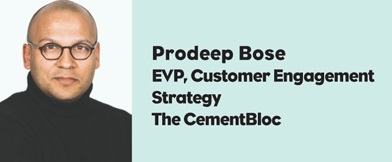The digital advertising marketplace continues to get more complicated. Not only do marketers have several more options to choose from when designing digital ads, but they also now have several options when it comes time to placing their ads online. We wanted to know the best practices for creating and placing “Digital That Delivers,” so we asked the industry for their best advice. Here is your handy guide to follow in order to design the best possible ad, place it so you reach the right audience at the right time, and finally how to measure your campaign’s success so you can be sure it delivered.
One of the simplest and best things you can do as a marketer is take full advantage of the digital space you are purchasing. For example, if you buy an interstitial ad unit that offers a screen space of 800 x 600 pixels, take full advantage of that space and create a full-page ad unit. All too often we see clients stick a preapproved ad size, such as 300 x 250, into the ad slot and waste a good portion of the screen real estate. If you are buying a placement on a site that accepts expandable ad units, and most do, take advantage of the ability to serve a rich media unit that offers deep functionality and information. It will simply perform better. Do all of this while being polite to the end users. For example, work only with a reputable publisher in which video or sound in ad units only start on user initiation and interstitials always have a “skip this ad” button. When preparing your content strategy, start simple. Messaging should be easy to read and engaging to the user during the one second the ad is visually scanned. Once the viewer is drawn in, content must be meaningful and useful. Examples might include video, downloads or email registration. Start by figuring out what information will serve the viewer best and then allow the creative room to provide that information. Polish the presentation of this content with enjoyable interaction. Be clear to the user how the ad “works,” such as expanded or playing video. Finally, testing and iterating cannot be overlooked. To borrow a term from analytics, “champion/challenger testing” is an ideal method where you start with the strongest ad and test small adjustments. The goal is to optimize the ad for best performance. Truly effective online advertising provides a motive to engage with an ad while providing the functionality to do so easily. For the consumer, it should feel like they are engaging with your brand, not an ad—no one wants to engage with advertising. Truly great advertising in the digital age does not come across as advertising at all. I am a proponent of ads that enable consumers to engage with brands within an ad unit rather than send them to a brand site or landing page. Whether that engagement comes in the form of video, the ability to perform a specific function (get an airfare quote, customize a sneaker, schedule a test drive) or simply to request more information, I’d suggest using whichever rich media ad technology best serves the necessary functionality. A new pattern is emerging within personal media consumption: Customers are increasingly liberating content from its original destination and curating it to take it with them. This leads to an increasing expectation that marketers will push valuable content to where customers live instead of the interrupt/pull strategies of yesterday. One way to do that is through native ad content. It used to be a long and painful process to place long-form editorial style ad content with publishers online. And, it was even harder to get good measurement. However, innovative companies, such as DistroScale, have made the placement, control of display and measurement as easy a process as placing and measuring regular digital ad space. And, this native content is flexible with support for integrated media and interactivity within the experience. Size matters! In pharma, banner ads are at a distinct disadvantage to those in other industries because our important safety information (ISI) eats up to half of an ad’s 40k maximum file load. It pushes us to be more creative and more conscious of file size. Our general rules of thumb are to design with 15k in mind and always use dynamic ISI. By limiting the use of images, turning-off letters not being used in embedded fonts, and using simple vector graphics for logos and backgrounds (instead of complex ones), you’ll give your flash animators more space to play with and enhance your ads’ overall functionality and design. In terms of overall design, keep it clean, simple and don’t use more than three fonts. Incorporate a lot of motion to attract attention and use a contrasting border color (white or black typically work best) to help your ad stand out. Creating a compelling message is critical to draw your target audience. Users are accustomed to ignoring banner ads unless there is something about the messaging and visuals that catches their eye, so the first frame design, content and animation should resonate with the audience you want to reach. Richer formats and interactive ads can also boost engagement. It could be begin with an experience that extends on a website or it could be direct response driven. For example, an HCP may want to test their knowledge on a certain condition, so using a quiz format may encourage engagement, intent and behavior change. Videos, interactive charts and graphs are also engaging formats to use. Finally, a clear and prominent call to action is one of the most important keys to a banner ad’s success. If users don’t have an idea of what to do next, they may only see your ad and not click through to the additional information you want them to see. It’s smart to make the whole banner clickable and not just a small button on the banner. Display Targeting: While the pharmaceutical world has been slow to use advanced targeting tactics for display advertising, the availability of targeting capabilities such as audience extension, connecting your offline CRM to online networks and the ability to target individuals after they search specific terms makes display advertising a more effective channel. Audience extension enables you to continue to show ads to an individual as they browse the web after they come in contact with one of your ads. This is similar to retargeting, but the user does not have to visit your site. If you have a multi-message campaign, this can be a great way to guarantee a user comes in contact with both messages. As many pharma companies attempt to connect their offline data to their online marketing campaigns, working with partners who offer CRM or email targeting can help you tie additional touch points down to the individual. Placement: Visuals on the left, words on the right. Image clusters should be uniform in the visual field. Clutter: Pages that are more content heavy and complex may be more likely to cause distraction from the advertisement. Our research also shows that less cluttered pages are less likely to create competition. Ad Placement: Ads placed higher up on the page, specifically above the fold, are more likely to be seen than those lower on the page or below the fold. Leaderboard Ads: Leaderboard advertisements placed above the menu are often skipped by respondents compared to those below the menu and closer to the page content. Programmatic buying, or real-time-bidding (RTB) is currently taking the digital banner industry by storm, and it’s estimated that by 2016, RTB will represent more than 80% of all digital banners sales. That said, buying in bulk is still viable, depending on the audience and goals of the campaign. The differences between RTB and bulk buying help illustrate when and where each form of buying makes sense. RTB offers greater reach: The benefits of RTB include not only cheaper cost per thousand (CPM), but also extended reach within the marketplace. Traditional ad networks at best cover only 50% of the online community. RTB through demand-side platforms (DSPs) and exchanges offer an astonishing reach of 95%. With RTB, each impression is profiled and evaluated in milliseconds during the auction process (while a page loads). You can target ad viewers at a demographic, psychographic and behavioral level, but the reach of RTB enables you to do so across a wide array of sites, rather than on just one, making it possible to target audiences at scale. Bulk ad inventory is “guaranteed:” With bulk or direct buys, you agree to buy a heap of ad inventory at a fixed CPM rate that the publisher will deliver in the future. In that sense, the inventory is “guaranteed” or “reserved” for you. This works well for advertisers and agencies that have specific exposure goals, e.g., sponsorship, roadblocks, etc., and require a high level of certainty that campaigns will deliver. In exchange for paying a higher rate to the publisher, you get certainty of campaign volumes and avoid the naturally competitive landscape of RTB. Higher barrier of entry with bulk buys: Direct buys require sizable minimums in ad spend by most publishers to get started. In general, you can expect a commitment of something between $5,000 and $10,000 for a direct buy of guaranteed inventory. On much smaller sites, you can get away with paying flat rates of a few hundred dollars. For larger publishers with attractive inventory, you won’t get any attention unless your budget is in the five- to six-figure range. For many small- to medium-sized marketers, this can be a non-starter. I’m most invigorated by the novel work happening in predictive modeling. In this arena, we’re starting to combine anonymized data from various sources (e.g., digital consumer traffic source data, consumer-level demographics and prescription conversion results) to create propensity models that we can use to better find and match specific health conscious consumers seeking newer and better treatment options with the right brands. This kind of modeling for brand-to-consumer (B2C) engagement has already gained traction in other industries where the consumer targets tend to be much broader. Companies like Acxiom, for example, combine digital consumer traffic source data with a consumer geo-demographic profile and transaction data to create broad consumer segments, such as Elite Suburbans or Dads with SUVs (names are for illustration only), which brands in categories like functional foods or mini-vans can use to buy against on the exchanges. Healthcare marketers, however, aren’t engaging these broad segments, but rather need a way to identify, educate and activate consumers in specific therapeutic categories. By leveraging predictive modeling techniques, we will start to see the promise of creating our own health-specific segments, like OAD-Negligent Diabetics or Frustrated Insomniacs, which will be actionable for appropriate targeting on the exchanges. The measurement battle is won (or lost) in planning, not execution. Brands often set themselves up for failure by not designing metrics that accurately measure their target behaviors. The actions established for measurement on the web should be proxies for off-line behaviors, and even then the correlation isn’t one-to-one. For example, attributing a lift in scrips to a web media initiative is a considerable challenge, but attributing coupon downloads to that same initiative is not. Measuring success can also mean qualitative analysis of metrics that are not represented on the web. For example, an initiative aimed at changing a behavior within a physician population may be most effectively measured through a survey given in the market in which the ads were served. Sometimes the most poignant insights come from combining seemingly disparate data sets. Furthermore, it’s important to consider the role of the display channel in the context of assisted conversions. Because it’s increasingly common for a user to visit a property several times before taking action, display is often a key player in the larger journey, even when a visit doesn’t directly yield the conversion. Multi-touch attribution should be part of every display marketer’s measurement plan. It isn’t often that we find tactical opportunities that can directly connect customer engagement to real-world adoption and purchase behavior that drives business outcomes. That is why we use a predictive model (SCORE, an acronym) that connects user actions online with customer behavior in the real world. The underlying premise is that user-initiated actions such as subscriptions to a newsletter or feed; conversion and fulfillment of a co-pay card; self-reported outcomes; social responses such as rate, rank, ask a question, etc.; and a shift in opinion through education on a given topic, are all indicators of intent, thereby foreshadowing a desired behavior. Any media buy can be evaluated on its success against this customer engagement framework. It is our job as an agency to monitor as much data as possible to know that we are targeting the right technology, with the right message. Although each device is unique, the overall experience must remain consistent. Users tend to identify with their devices, and if you decide not to focus on say, people using tablets, then you send a negative brand message to that audience. Our ability to track online behaviors is much more sophisticated, and in turn, allows our clients to maximize their spend by targeting the right audience with a better online experience.















